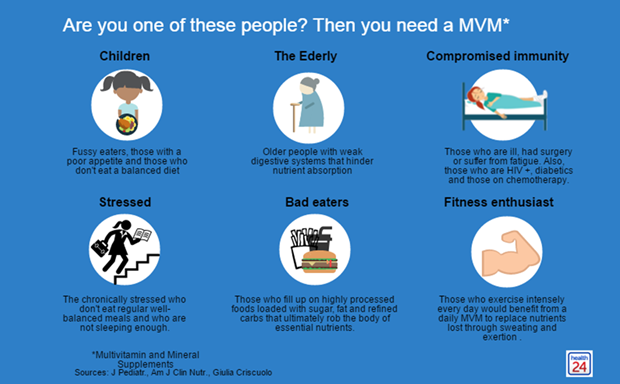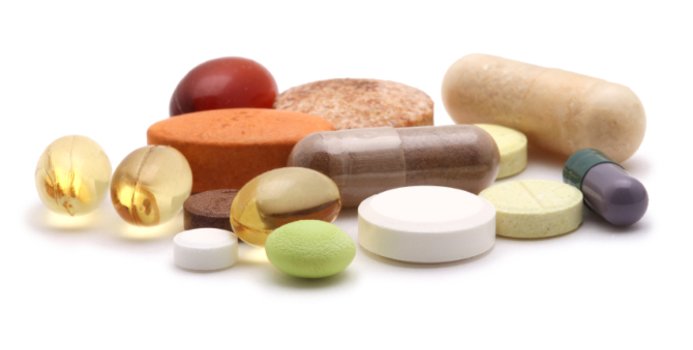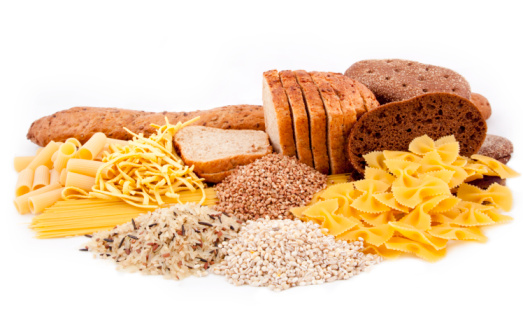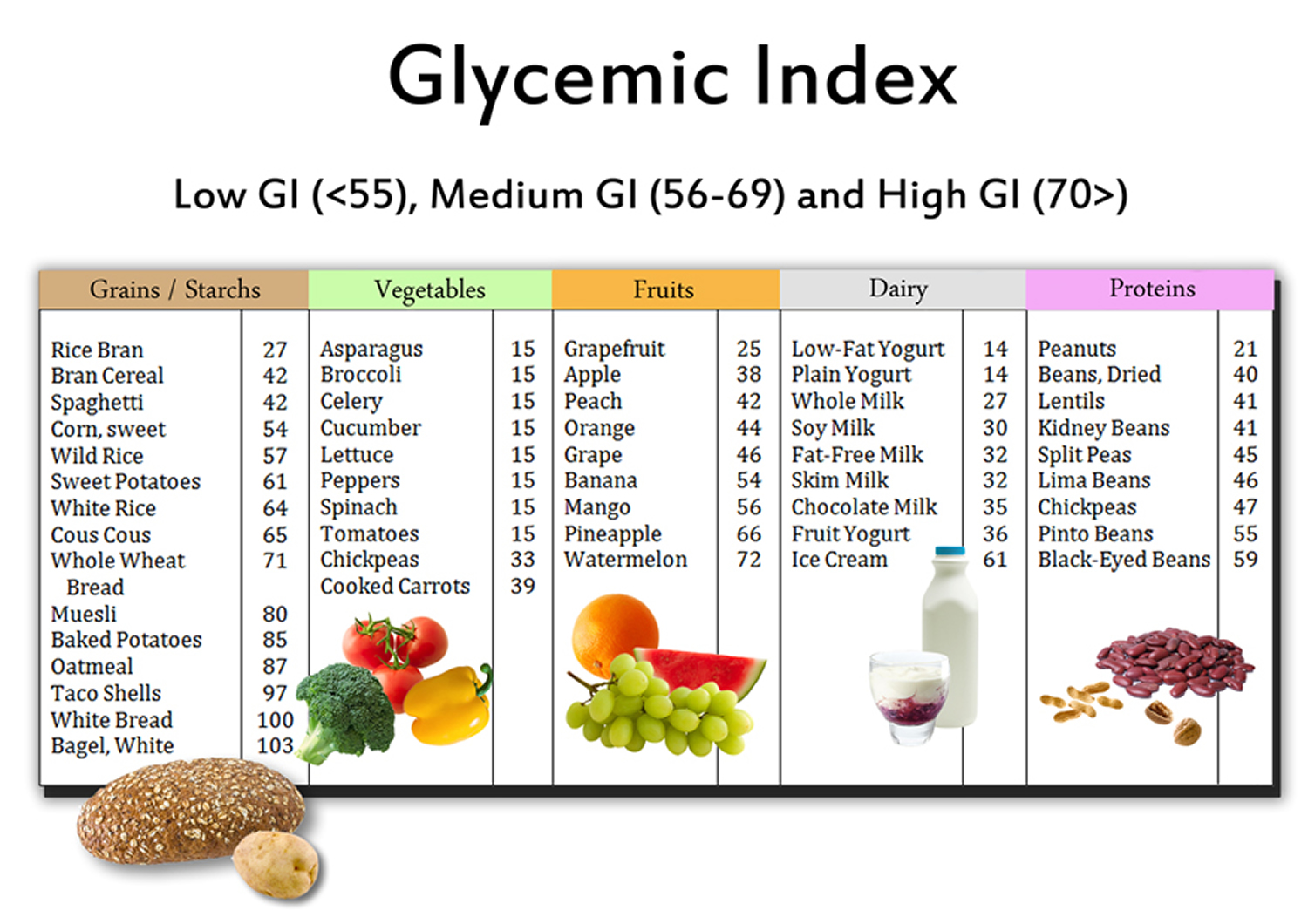Saturday, 20 October 2018
Saturday, 6 October 2018
WHY DO YOU NEED MULTI-VITAMINS
What's in it for health enthusiasts, fitness gurus, and bodybuilders?

1. Why you should take multi-vitamins?
2. How multi-vitamins affects your daily life?
3. What will multi-vitamin do for the long term?
1. Why you should take multi-vitamins?
Multi-Vitamins is a complete source of everything the body needs in one go with that said its still a supplement it means it doesn't replace your daily meals, so why we can't just try and eat most of the veggies and fruits and then we are fine, well theoretically it make sense but unfortunately that is not how our body works
take an example for the most important vitamin which is Vitamin-C, for most who do not know vitamin C is not only useful to protect you from cold and flu but its an essential vitamin to recover your exhausted muscles from the catabolic effect of working out or even doing any physical effort
so in the night you need to consume vitamin c in order to recover while sleeping.
what if we consumed orange instead of vitamin C,
so lets say you need 500mg of vitamin c and an orange only contains 51mg so you need to consume 10 orange at one go, so you also consumed lots of acid and fractose at one go.
now it makes no sense to swap the vitamins with fruits but you need both
you can say the same about all the other vitamins and they are:
- Vitamin A: Necessary for skin, eye and immune health.
- Vitamin C: Essential for your immune system and collagen production.
- B vitamins: Involved in energy metabolism and red blood cell production.
- Calcium, magnesium, vitamin D, vitamin K and zinc: Vital for bone health.
- Vitamin E and selenium: Help protect your cells from damage.
- Omega 3-6-9: fatty acids can increase "good" HDL cholesterol. They can also reduce triglycerides, blood pressure and the formation of arterial plaques
C, B1, B2, B3, B5, B6, B9, B12, biotin, A, E, D2 (or D3), K, potassium, iodine, selenium, borate, zinc, calcium, magnesium, manganese, molybdenum, betacarotene, and/or iron.
2. How multi-vitamins affects your daily life?
Bodybuilders, athletes, and people that lead active lifestyles need even more nutrients than the average non-active person.
VITAMIN A
Because it aids the repair and growth of body tissues, vitamin A is crucially important to bodybuilders. Other important functions of vitamin A are the development of the reproductive system, skin and mucosal lining protection and eye sight integrity. Many bodybuilders probably have marginally low vitamin A intakes, due to their emphasis on other dietary factors.
Intense physical activity, however, disrupts the absorption of vitamin A and can exacerbate the already fragile state of the vitamin A levels bodybuilders might have. A low-fat intake can also affect vitamin A status. Vitamin A and carotene can be lost in the faeces of one who is on a low fat diet as with a low fat intake very little bile gets to the intestine, where it helps to ensure that vitamin A is retained and absorbed.
Vitamin A also helps regulate the immune system through helping lymphocytes, a type of white blood cell that fights infections, function more effectively.
Some carotenoids have also been shown to function as antioxidants to fight free-radical build-up and further aid the immune system.
Vitamin A promotes normal growth and development of the bones and teeth. It stimulates young cells to become mature, specialized cells that produce bone tissue and tooth enamel.
VITAMIN C:
Vitamin C, also known as ascorbic acid or L-ascorbate, is an essential vitamin to the human body. It could very well be one of the safest and most important vitamins you could take on a daily basis. Vitamin C is most known as the first thing people go for whenever they have a cold. It is a water-soluble vitamin that is necessary for normal growth and development. Since it is water soluble, extra amounts that the body doesn't use leaves the body through urine within 24 hours.
It is an antioxidant as well. Antioxidants are nutrients that block some of the damage caused by free radicals, which are by-products that result when our bodies transform food into energy. Antioxidants also possibly help reduce the damage to the body caused by toxic chemicals and pollutants such as cigarette smoke.
Vitamin C is required for the growth and repair of tissues in all parts of your body. It is used to form collagen, a protein used to make skin, scar tissue, tendons, ligaments, and blood vessels. It is also essential for the healing of wounds, and for the repair and maintenance of people's cartilage, bones, and teeth. C also helps with blood pressure by strengthening the walls of the arteries. It can also prevent damage to cells caused by aging as well as help reduce stress.
Calcium, magnesium, and zinc:
Numerous research studies have suggested that zinc and magnesium help enhance muscle size, muscle strength, and fat loss, not to mention overall health and well-being.*
Better sleep quality also helps to aid muscle recovery from tough workouts.
Vitamin E:
Vitamin E may help ease muscle soreness from a rigorous workout, according to a 2002 study. The vitamin acts as an antioxidant to protect cells from free radicals generated during a workout. ... It's a normal response to overexertion and part of a process that leads to greater strength once the muscles recover.
Omega 3-6-9:
Maintaining cellular health, decreasing inflammation, lowering "bad" cholesterol, preventing many diseases (such as cancer), brain development, skin problems, heart health, prevents blood clotting, fat loss.

3. What will multi-vitamin do for the long term?
Doctors reviewed 15 studies covering healthy adults, pregnant women, and older adults, where the supplements contained at least nine vitamins and three minerals at up to 100 percent of the recommended dietary allowance. “Multivitamin-minerals within the range of Dietary Reference Intake will not result in excess intake, even when including food and fortified food, and do not increase mortality,” researchers concluded, continuing, “Multivitamin-minerals can be safe for long-term use of more than 10 years.”
Even with a balanced, healthy diet, micronutrient gaps can occur from time to time, and nearly three in four Americans don’t get enough vitamins A, C, D, and E, calcium, and magnesium. Multivitamin-mineral supplements help close these gaps, improve nutritional levels, and reduce potential health issues without exceeding upper recommended limits, doctors said.
By: Mohamed Riad
bodybuildingmeals admin (facebook)
Saturday, 1 September 2018
Post Cycle Therapy (PCT)
PCT
Before Beginning PCT:
It is highly recommended to establish baseline blood values before beginning a cycle. The same principle applies to establishing post cycle blood values, which are necessary for evaluating recovery. Post cycle blood work should be obtained approximately 4 weeks after the cessation of PCT in order to determine accurate readings. Additional blood work should be performed when applicable and/or required.
The following are Fasting blood values:
Hormone
1. Cortisol, Total
2. Estradiol, Extraction
3. Prolactin
4. LH
5. FSH
6. T3, Free
7. T4, Free
8. TSH
9. Testosterone, Total, Free and Weakly Bound
10. Hemoglobin A1C
11. Fasting Insulin
12. Somatomedian C (optional)
Cardiovascular
13. CBC
14. Comprehensive Metabolic Panel
15. Lipid Panel
Other
16. GGT Important Liver Value not included in Comp Metabolic Panel
When to begin PCT:
On average, begin PCT approximately 5-10 days after your last injection regardless of longer acting esters. Begin PCT 1-3 days after your last injection and/or intake when using short acting esters.
PCT Protocol(s):
1.) 1,000 IUs HCG 3x/wk (mon/wed/fri) in combination with 20 mgs Nolvadex ED for the first 3 weeks. After, discontinue HCG and continue with 20 mgs Nolvadex ED for an additional 3 weeks.
2.) 1,000 IUs HCG 3x/wk (mon/wed/fri) in combination with 20 mgs Nolvadex ED and 50 mgs Clomid ED for the first 3 weeks. After, discontinue HCG and continue with 20 mgs Nolvadex ED and 50 mgs Clomid ED for an additional 3 weeks.
3.) 1,500 IUs HCG 3x/wk (mon/wed/fri) in combination with 20 mgs Nolvadex ED for the first 3 weeks. After, discontinue HCG and continue 20 mgs Nolvadex ED for an additional 3 weeks.
4.) 1,500 IUs HCG 3x/wk (mon/wed/fri) in combination with 100 mgs Clomid ED and 20 mgs Nolvadex ED for the first 3 weeks. After, discontinue HCG and continue with 50 mgs Clomid ED and 20 mgs Nolvadex ED for an additional 3 weeks.
HCG During Cycle:
HCG in combination with Nolvadex can and should be used during prolonged (12+/wks) and high dosage (1,000+mgs/wk) cycles. In this case, 500-1,000 IUs HCG ED in combination with 20 mgs Nolvadex ED for 7-10 days consecutively is administered mid cycle or intermittently (every 6-8 weeks) during the cycle.
Conclusion:
PCT should begin after the last injection and/or AAS intake. More specifically, a relative guideline to begin PCT is within 5-10 days when using long acting esters or 1-3 days when using short acting esters. This PCT protocol should consist of 1,000-1,500 IUs HCG 3x/wk (mod/wed/fri) in combination with 20 mgs Nolvadex ED and, if necessary, 50-100 mgs Clomid ED. The mid/intermittent cycle protocol of 500-1,000 IUs HCG and 20 mgs Nolvadex ED for 7 days consecutively can and should be utilized when necessary during prolonged (12+/wks) or heavy dosage (1,000+mgs/wk) cycles. In addition, blood work should be performed before beginning a cycle and after completing a cycle in order to establish baseline values and evaluate recovery, respectively.
Thursday, 19 July 2018
LOW CARB - LOW GI DIET
(LOW CARB - LOW GI) DIET
Today and after centuries bodybuilding and fitness experts have already succeeded in finding the most optimum way of losing fat without sacrificing muscle growth.
so back in the old days when bodybuilders and athletes in the gym used to train hard they often divided their routine into bulking phase and cutting phase, So far that has changed a bit
bulking and cutting is one thing and it's a lifestyle.
Although you still bulk and cut your fat percentage should not change much because even when you bulk you are still on a healthy diet.
So the conclusion is the whole year you are eating healthy in order to stay lean all year around
So the question is : WHAT SHOULD I DO?
so my answer to that question won't come in two lines ...
Experimental Study of Carbohydrate Claims on Food Packages Analysis Report
if you go back to the heading it say's LOW CARB - LOW GI so what that mean?
please keep reading to the end of the article..
LOW CARB DIET:

as you can see above that's all kinds of carbs:
you should know when you can eat high carbs and when you should reduce your carb meal
You can eat a large carb meal before your workout by 60 minutes or at your breakfast
or post your work
but you have to avoid high carb meals when you are off training days or when its getting late
means after 6:00pm
Although LOW CARBS is different from person to person,
Let's say average 90 kg bodybuilder: low carb if below 200 grams per day
but DONT TAKE THAT AS A GENERAL as I said it depends and varies
It depends on (training - lifestyle- body type)
for me, It was always try and error
so for instance if you are doing a super-set training schedule you can still up your carbs and lose fat, gain muscle so no rules but we take general rules and tailor it to our body
WHERE I CAN FIND CARBS:
Dairy
Milk, yogurt, and ice cream
Milk, yogurt, and ice cream
Fruit
Whole fruit and fruit juice
Whole fruit and fruit juice
Grains
Bread, rice, crackers, and cereal
Bread, rice, crackers, and cereal
Legumes
Beans and other plant-based proteins
Beans and other plant-based proteins
Starchy Vegetables
Potatoes and corn
Potatoes and corn
Sugary Sweets
Limit these!
Soda, candy, cookies, and other desserts
Limit these!
Soda, candy, cookies, and other desserts
LOW -GI
what is GI (Glycmic-Index):
is a relative ranking of carbohydrate in foods according to how they affect blood glucose levels. Carbohydrates with a low GI value (55 or less) are more slowly digested, absorbed and metabolised and cause a lower and slower rise in blood glucose and, therefore insulin levels.
CAN YOU EXPLAIN MORE?
Okay let's make it simple which food to avoid is what is having a high GI and what to eat more which having low GI
(High GI you can still consume it just before a workout or post workout) but no SUGAR

Low GI Foods (55 or less)
- 100% stone-ground whole wheat or pumpernickel bread
- Oatmeal (rolled or steel-cut), oat bran, muesli
- Pasta, converted rice, barley, bulgar
- Sweet potato, corn, yam, lima/butter beans, peas, legumes and lentils
- Most fruits, non-starchy vegetables and carrots
Medium GI (56-69)
- Whole wheat, rye and pita bread
- Quick oats
- Brown, wild or basmati rice, couscous
High GI (70 or more)
- White bread or bagel
- Corn flakes, puffed rice, bran flakes, instant oatmeal
- Shortgrain white rice, rice pasta, macaroni and cheese from mix
- Russet potato, pumpkin
- Pretzels, rice cakes, popcorn, saltine crackers
- melons and pineapple
PLEASE FOLLOW OUR BLOGS FOR MORE INFORMATION
By MOHAMED RIAD
Bodybuildingmeals admin
Subscribe to:
Comments (Atom)


